|
McCloud River Railroad Company Alco C-415 demonstrator on the McCloud River |
||||||||||||||||||
|
|
||||||||||||||||||
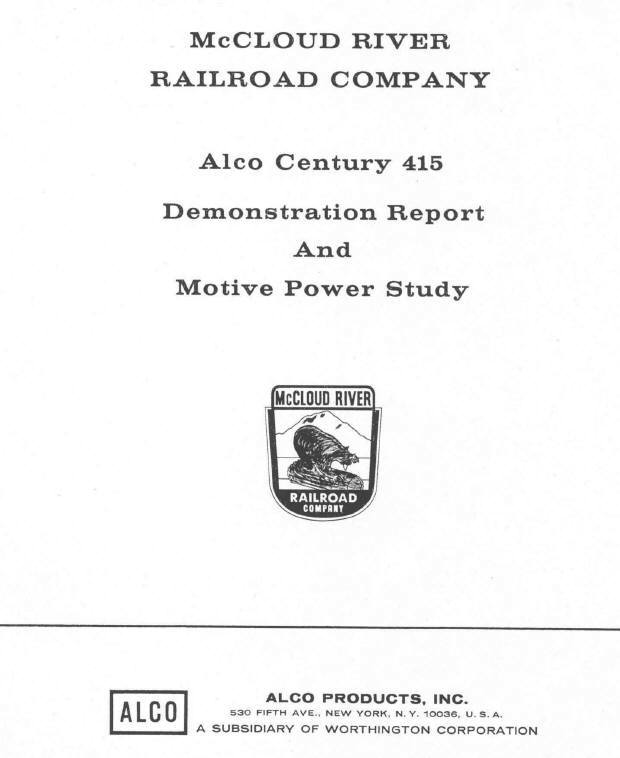 |
||||||||||||||||||
|
The cover of the report generated by the American Locomotive Company detailing the performance of their C-415 demonstrator unit on the McCloud River Railroad. Courtesy of Tom Moungovan,
from the Ray Piltz collection. |
||||||||||||||||||
|
|
||||||||||||||||||
|
Background The McCloud River Railroad had a long relationship with the Baldwin Locomotive Works. Baldwin built seventeen of the twenty seven known steam locomotives McCloud owned, twelve of them built new for the road. This relationship continued into the diesel era, as McCloud replaced all of its steam locomotives with four new Baldwin diesels acquired between 1948 and 1953, followed by two more in 1955 to power the new Burney line. However, for a variety of reasons Baldwin could not adapt quickly enough to the rapidly changing market conditions and built its last locomotive in 1956. The Baldwin diesels were nearly perfect for the McCloud, but first generation diesels were not well known for longevity, especially in the harsh operating environment they experienced on the McCloud. Three used Baldwin diesels purchased in 1963 and 1964 extended the Baldwin era on the McCloud, but by the later 1960s the railroad could see their fleet would require at least rebuilding in the near future. Baldwin parts were starting to become scarce, compounded further by the fact that McCloud's fleet contained several different models spanning a couple iterations of Baldwin diesel development. The railroad opted to search for replacement power. The American Locomotive Company (Alco) provided the only significant competition to Baldwin during the steam era, and had built six of McCloud's steam locomotives, four of them new for the road. Like Baldwin the company made the transition from building steam to building diesels, but proved more successful than Baldwin. However, Alco once again found itself playing second fiddle to another builder, this time behind the Electro-Motive Division of General Motors (EMD). By the late 1960s EMD had almost universal dominance over the diesel road switcher market, but Alco continued to hang on aided at least in part by strongly worded suggestions from the Federal government that railroads consider Alco products to avoid antitrust issues. In 1966 Alco introduced its C-415 model. Alco intended the C-415 to be a medium duty road switcher, capable of handling most light low speed road jobs while being equally adept at yard switching chores. The model had the cab located in the middle of the unit, slightly off center to one side. Alco installed the prime mover, main generator and equipment blowers were located in the longer of the two hoods. A drive shaft from the front of the prime mover ran underneath the cab floor to the shorter of the two hoods, where it ran the air compressor and flan clutch mechanism. Alco offered several different options on the model, including three different cab heights and a choice between standard AAR-type switcher trucks or high adhesion trucks. In the fall of 1966 Alco released its C-415 demonstrator unit #415 for a nationwide tour. McCloud was then starting to contemplate replacing its Baldwin diesels and consented to a week long test of the #415 in February 1967. After the test Alco produced a fine report detailing the performance of the demonstrator unit along with a proposal for the railroad to purchase three C-415s to replace the eight Baldwin diesels (six operational, two parts sources) then on the roster. |
||||||||||||||||||
|
|
||||||||||||||||||
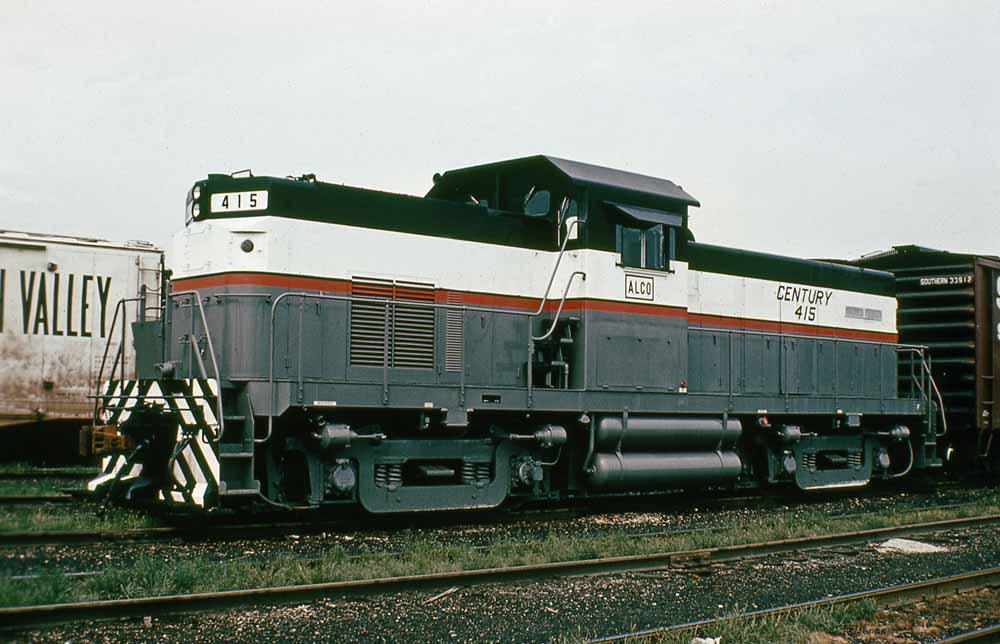
|
||||||||||||||||||
| Alco's C-415 demonstrator unit #415, by all appearances somewhere in the northeastern United States. The #415 featured the medium height cab and AAR trucks. Jeff Moore collection. | ||||||||||||||||||
|
|
||||||||||||||||||
|
The Testing At the time of the #415's visit, the McCloud River was running four daily jobs over the road, described in Alco's report as: 1. McCloud to Burney with trips to the lumber mills at Pondosa, Lorenz and Scotts and return to McCloud. This operation requires two units between the hours of 8:00 AM and 8:00 PM. 2. McCloud to Lookout Junction and return to McCloud. This operation requires one unit between the hours of 8:00 PM and 3:30 AM. 3. McCloud to Mt. Shasta and return to McCloud. This operation requires two units between the hours of 9:30 PM and 3:30 AM. 4. One unit is required at the McCloud Yard as a switcher between the hours of 8:00 AM and 8:00 PM. The Alco report contained a day-by-day report of the movements of the #415, including analysis of the performance of the unit, some of which is worth reporting here. The descriptions also provide some fascinating insights into the operations of the road at the time. Monday, 6 February 1967 The #415 arrived at Lookout Junction via the Western Pacific and was towed dead to McCloud. The first solo run of the unit took place that night, when the unit took a train of 607 trailing tons (no caboose) to Signal Butte. The unit slipped quite a bit on the 4% grade leading up to the switchback, and at Signal Butte the demonstrator was cut off and returned to McCloud. Alco stated that the tonnage rating of the C-415 on a 4% grade is 560 tons at a continuous speed of 7.2 miles per hour, assuming an average car weight of 60 tons. Alco concluded that the demonstrator unit (which weighed 255,000 pounds) may have been too light to produce adequate adhesion to the rail. Tuesday, 7 February 1967 The demonstrator departed McCloud at 8:00 AM on the point of a Berry job. The train consisted of three loads, eight empties and a caboose. One of the loads was a 150-ton transformer on an 85-ton flatcar for a total car weight of 235 tons. The demonstrator stalled out on icy rails at a S-curve on the climb out of the Pit River Canyon , just south of the Lake Britton Bridge. The demonstrator had to double the hill to reach the top. Some cars were set out at the Arkrite siding (now gone) before continuing on to Burney, making additional setouts and pickups at Lorenz and Scotts lumber mills. The return trip to McCloud saw the demonstrator hauling 976 trailing tons, consisting of 13 loads and one caboose. Three of the 13 loads were 110-ton woodchip loads. The C-415 stalled out on the 2.5% grade at MP 47, about one mile south of Cayton. Alco attributed the stalling out to a bent sander on the lead sander on the right side of the locomotive, which caused sand to be deflected away from the flange area. The demonstrator ended up doubling the hill to Cayton, where the train was re-assembled. No further problems were encountered, and the train arrived back in McCloud at 8:00 PM. Immediately after arriving back in McCloud the C-415 took 7 cars (440 trailing tons) to Lookout Junction and returned with empties. Wednesday, 8 February 1967 The demonstrator made a successful roundtrip from McCloud to Burney and return on this day, switching lumber mills at Pondosa, Scotts and Lorenz along the way. The return trip departed from Burney at 3:35 PM with ten loads, three empties, and one caboose for a total trailing weight of 801 tons. Five additional loads weighing 289 tons were picked up at Obie, which filled out the train to 1090 tons. The unit made McCloud without any problems. After arriving at McCloud the unit once again went to Lookout with eight loads, one empty and one caboose for a total trailing weight of 548 tons. No problems were recorded. Thursday, 9 February 1967 On this day the demonstrator again went to Burney, taking one load and sixteen empties for a total trailing weight of 530 tons. No problems were encountered. The returning train from Burney consisted of eleven loads, one empty and one caboose for a total trailing weight of 828 tons. Some slipping was reported, but the unit did not stall out. Upon arrival back in McCloud the C-415 was put to work switching the yard for the next four hours. Once the switching chores were complete the unit along with two Baldwin diesels (not otherwise identified) took 17 loads up the hill towards Mt. Shasta City. The train consumed 45 minutes getting from McCloud to Signal Butte, with the C-415 operating in the "red" zone (1350 amps) at 5 miles per hour for that distance. The train reached Signal Butte at 10:35 PM, where the traction motors were found to be cool to the touch. The train then continued the rest of the way to Mt. Shasta City and returned to McCloud with minimal slipping reported. Friday, 10 February 1967 The C-415 was again dispatched at 8:45 AM from McCloud, heading to Burney with three empties and a caboose. On the return trip the unit pulled twelve loads and a caboose for a total trailing weight of 907 trailing tons, including three chip loads with a cumulative weight of 290 tons. The unit made it to Obie with only an occasional slip. Five additional loads weighing 297 tons were picked up at Obie, increasing the train weight to 1204 tons. The C-415 made it back to McCloud with that train. The unit was again dispatched for Lookout Junction at 8:00 PM with fourteen loads and one caboose for a total trailing tonnage of 879 tons. The unit was apparently interchanged back to either the Great Northern or Western Pacific upon arrival at Lookout Junction. |
||||||||||||||||||
|
|
||||||||||||||||||
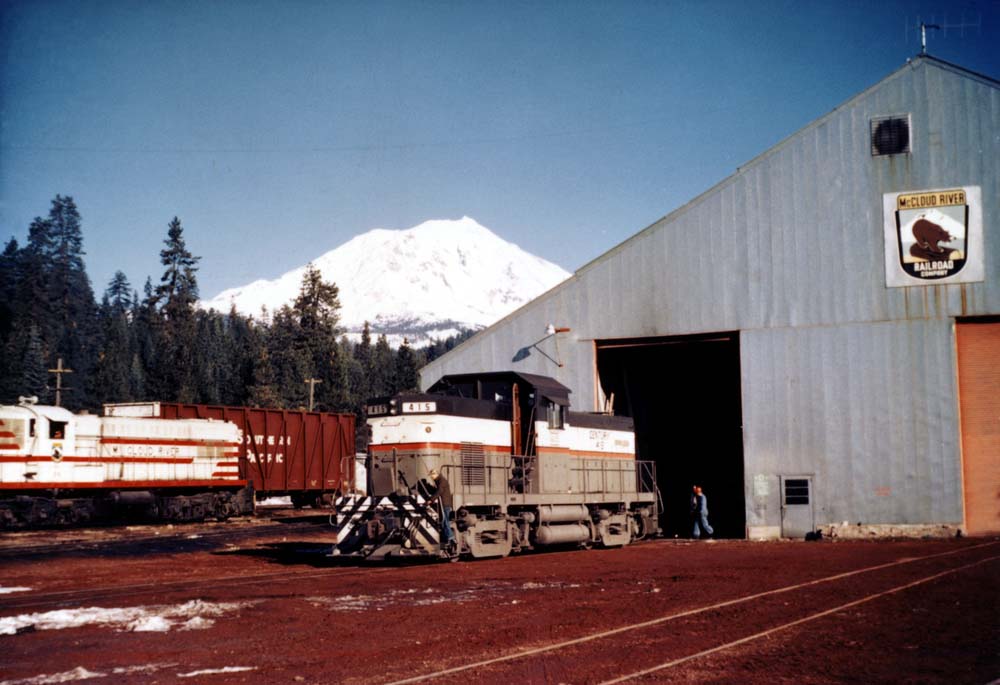 |
||||||||||||||||||
| Picture from the report of the Alco C-415 demonstrator sitting in front of the McCloud shop. Courtesy of Tom Moungovan, from the Ray Piltz collection. | ||||||||||||||||||
|
|
||||||||||||||||||
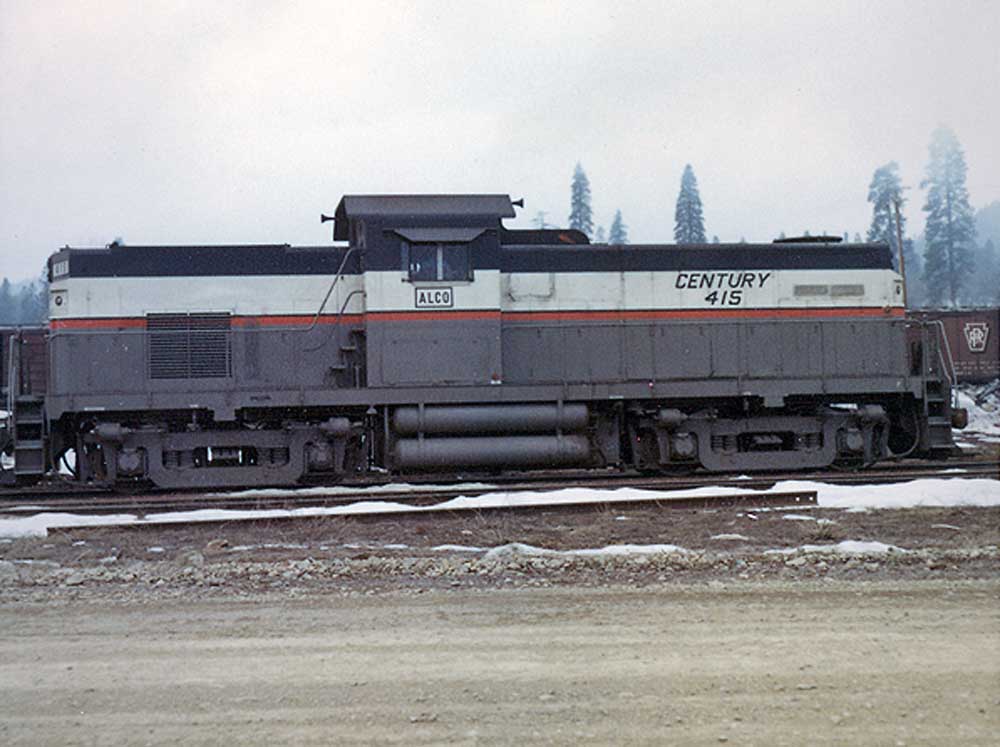 |
||||||||||||||||||
| A color shot of the C415 demonstrator in McCloud. Photograph from the Travis Berryman collection. | ||||||||||||||||||
|
|
||||||||||||||||||
|
Conclusions Alco developed tonnage ratings for its C415 model based on the data collected during the trials. The tonnage ratings were as follows:
|
||||||||||||||||||
|
The above table was based on an average car weight of 60 tons and are rated for a C415 operating at a continuous speed of 7.2 miles per hour with a 72/14 gear ratio. Westbound trains
would be those traveling from Burney to McCloud, or from McCloud to Mt. Shasta City, with Eastbound trains operating the opposite direction. |
||||||||||||||||||
|
|
||||||||||||||||||
|
Epilogue American Locomotive Company submitted a proposal as part of the report that the McCloud River Railroad replace all six active Baldwin diesels on the roster at the time with three C415s equipped with high adhesion trucks, ballasted to a weight of 260,000 pounds, and with a 74/18 gear ratio. Alco included in the report a proposal showing how the railroad could maintain the 24-hour operating pattern at the time. 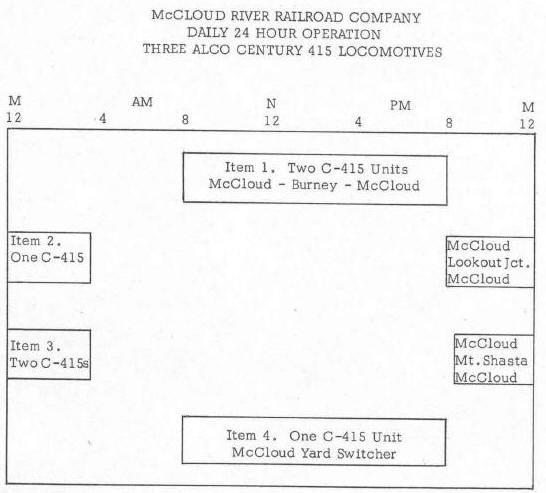
In hindsight, it is fortunate that the McCloud River did not accept Alco's proposal. The C-415 ended up having a lot of issues once in service. The 8-cylinder model 8-251E prime mover Alco used in
the model proved very unreliable. The off-centered location of the prime mover caused the unit to be badly off balance, leading to excessive wheel slip and wheel wear. The cooling system was also
problematic, as coolant had to be transported from the prime mover at one end of the unit to the radiator at the other end of the unit, and the piping system was very prone to leaks. Alco only
ended up building 26 C-415s until production ended in 1968, consisting of 1 demonstrator unit (medium height cab, AAR-B trucks); 1 for Monongahela Connecting in Pittsburgh, PA (low cab, Hi-Ad trucks);
1 for Chehalis Western in Washington (High cab, Hi-Ad trucks); 1 for Columbia & Cowlitz in Washington (High cab, Hi-Ad trucks); 2 for the Spokane, Portland & Seattle (Medium cab, Hi-Ad trucks);
10 for the Rock Island (Medium cab, AAR-B trucks); and 10 to the Southern Pacific (High cab, AAR-B trucks). The EMD products that the railroad purchased instead two years later proved to be much more durable machines than the Alco C415, and had the McCloud River gone ahead with the C-415 purchase they would have been facing a major motive power crisis right at the point in it’s history when it could least afford it. Market forces finally forced the American Locomotive Company to exit the locomotive building business in 1969. Below are several Tyler Whitcomb pictures of a C415 that closely resembles what McCloud River C415s might have looked like, with the high profile cab and the high adhesion trucks. Alco built this particular unit for the Weyerhaeuser company in July 1968 as its c/n 6003-1. Weyerhaeuser used the unit on its Chehalis Western, Curtis Milburn & Eastern, and revived Chehalis Western railroads in the greater Tacoma area before being sold with the railroad to the City of Tacoma. Railcar America, a freight car repair business, then leased the unit during the time they operated out of the old Weyerhaeuser shop building at Western Junction, WA. In 2009 Tacoma deeded the locomotive to the city of Fife, Washington, who cosmetically restored the machine and placed it on display along with a caboose. |
||||||||||||||||||
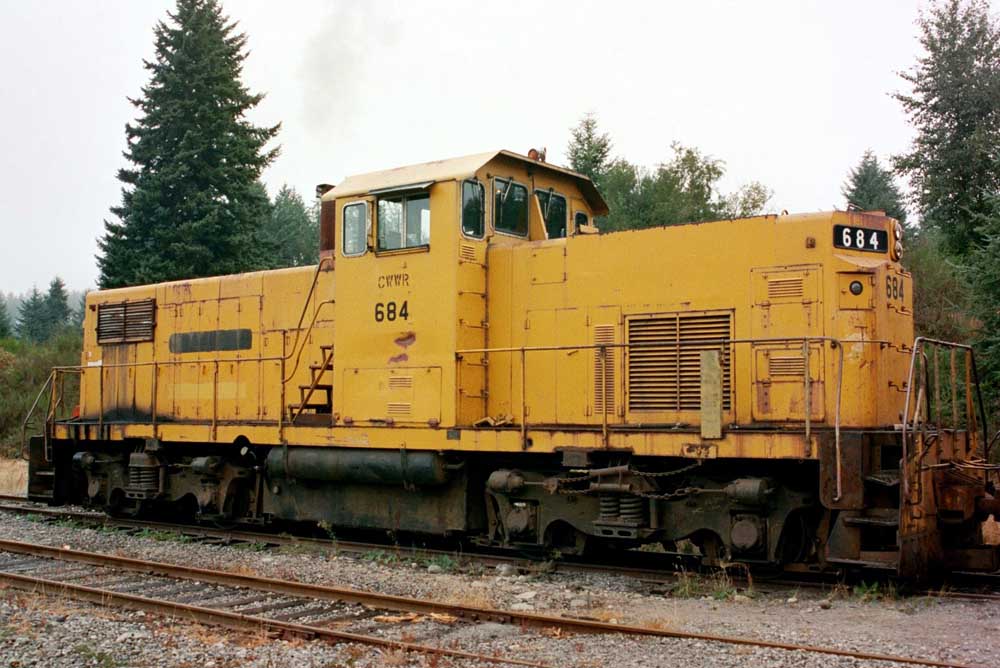 |
||||||||||||||||||
|
Broadside view of the #684. The prime mover is located in the hood on the other side of the cab. |
||||||||||||||||||
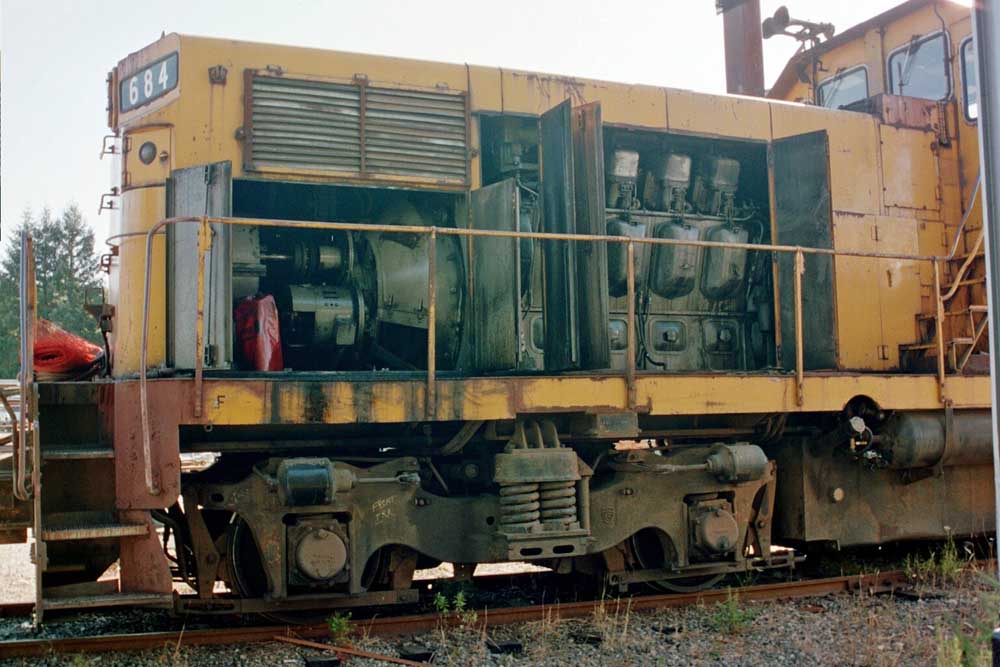 |
||||||||||||||||||
|
View through open hood doors at the prime mover and generator located in the longer of the two hoods. |
||||||||||||||||||
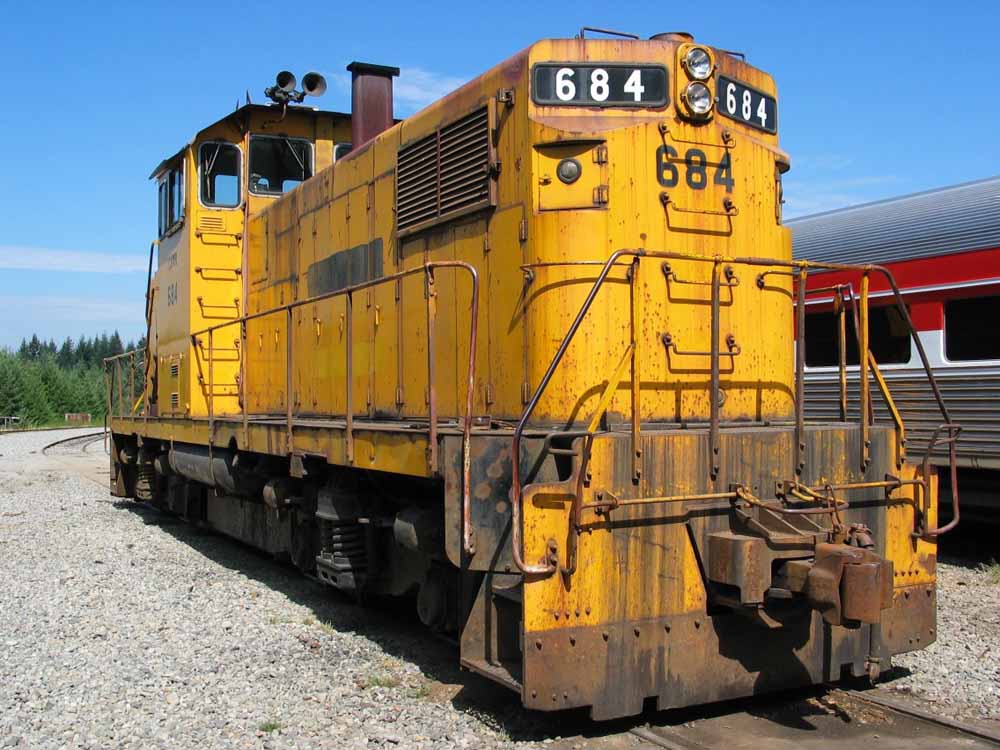 |
||||||||||||||||||
|
Wedge shot of the front and side of the Chehalis Western C415. |
||||||||||||||||||
|
|
||||||||||||||||||
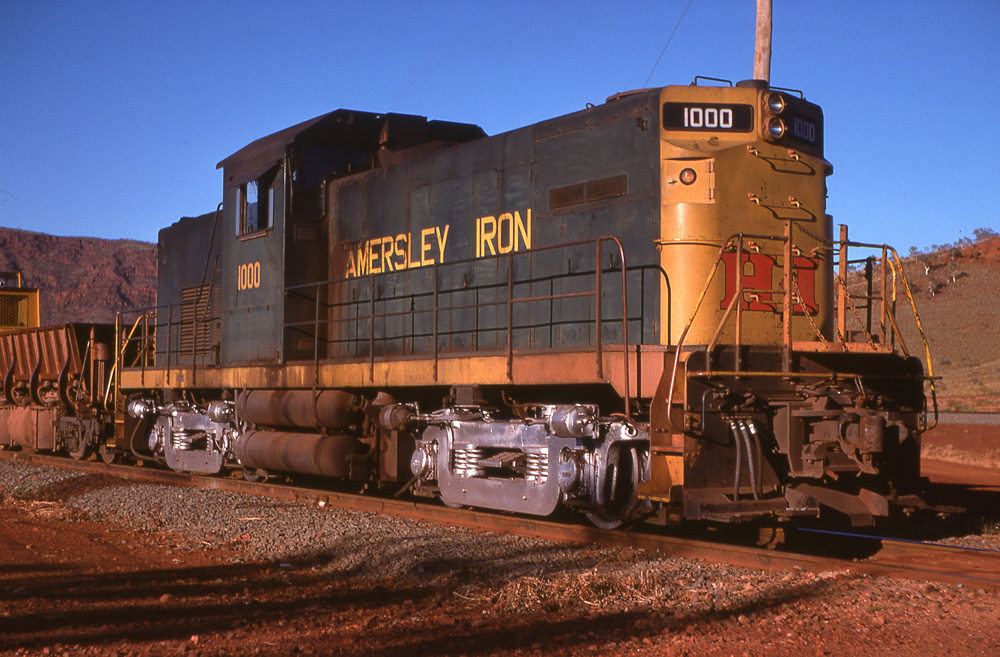 |
||||||||||||||||||
|
Alco sold the demonstrator unit that worked on McCloud to Hammersley Iron in Paraburdoo, Western Australia, who assigned it their #1000. Leon Batman captured this photo of it in October 1975. The Pilbara Railways Historical Society has preserved the locomotive in their collection at Dampier, Australia. |
||||||||||||||||||
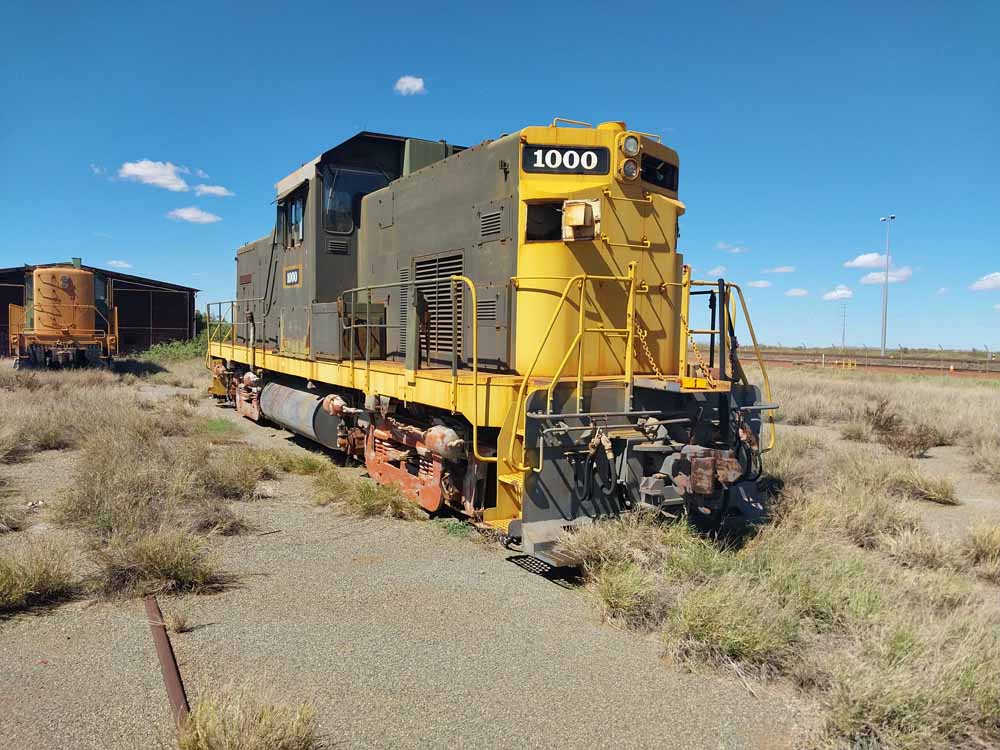 |
||||||||||||||||||
|
The Pilbara Railways Historical Society has fallen on hard times and is at present largely closed. Phil Burrows recently got to visit and photograph the former demonstrator unit, and he sent along some of his images of what the locomotive looks like today. Thanks, Phil! |
||||||||||||||||||
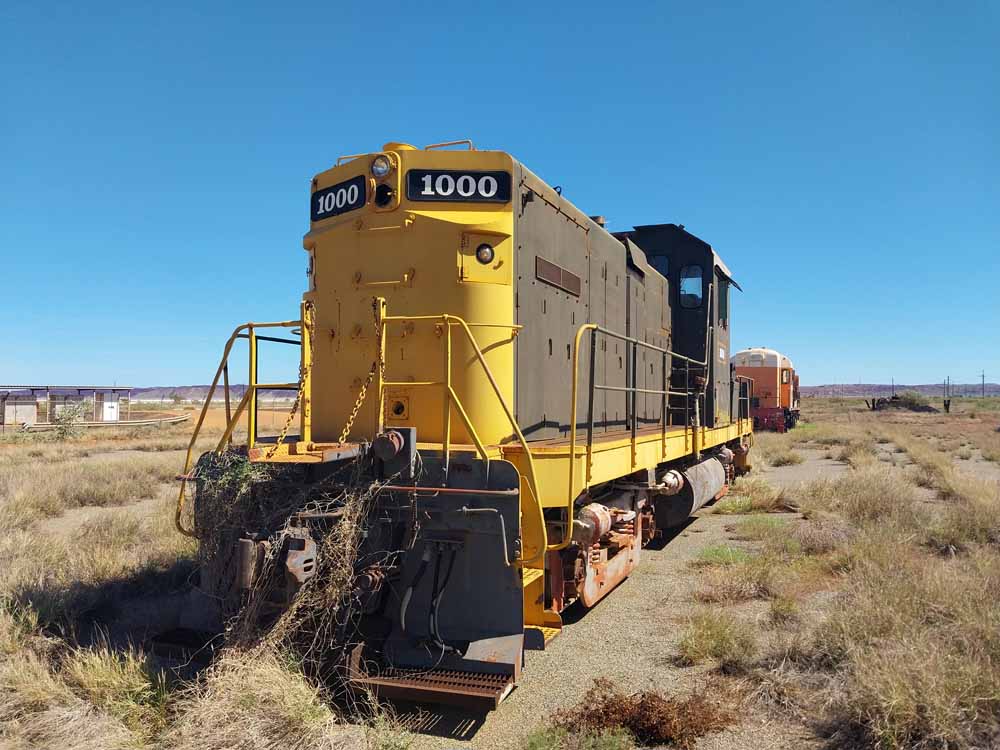 |
||||||||||||||||||
|
The unit from the other end. Phil Burrows photo. |
||||||||||||||||||
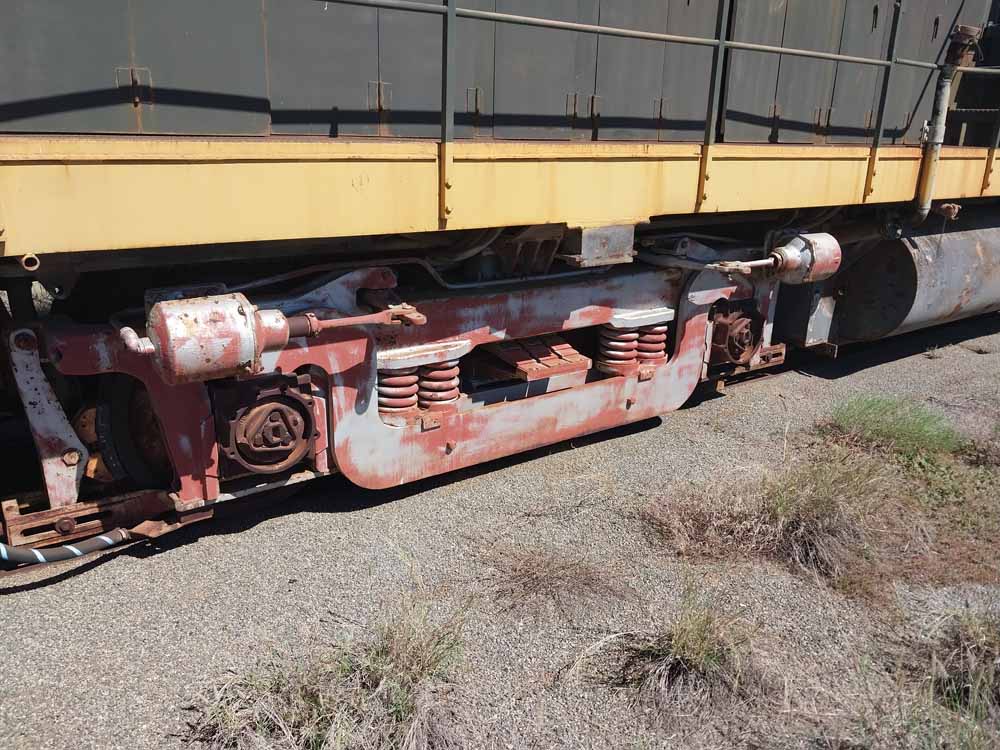 |
||||||||||||||||||
|
A close up of the AAR trucks underneath the unit. Phil Burrows photo. |
||||||||||||||||||
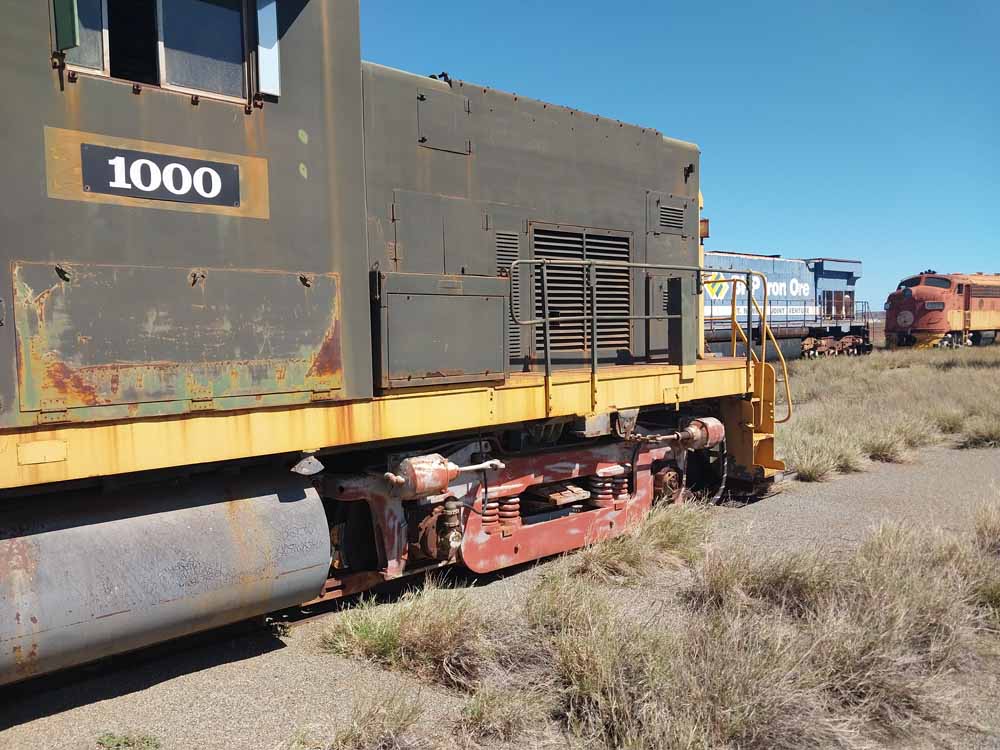 |
||||||||||||||||||
|
Another external view of the demonstrator unit. Phil Burrows photo. |
||||||||||||||||||
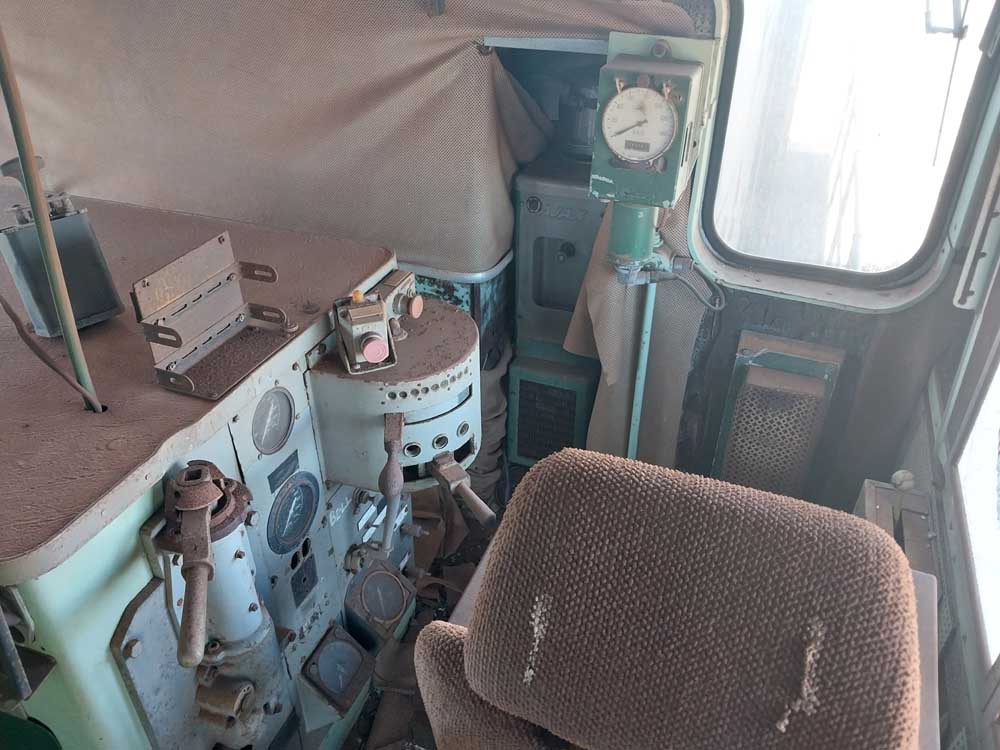 |
||||||||||||||||||
|
A view inside the cab of the locomotive. Phil Burrows photo. |
||||||||||||||||||
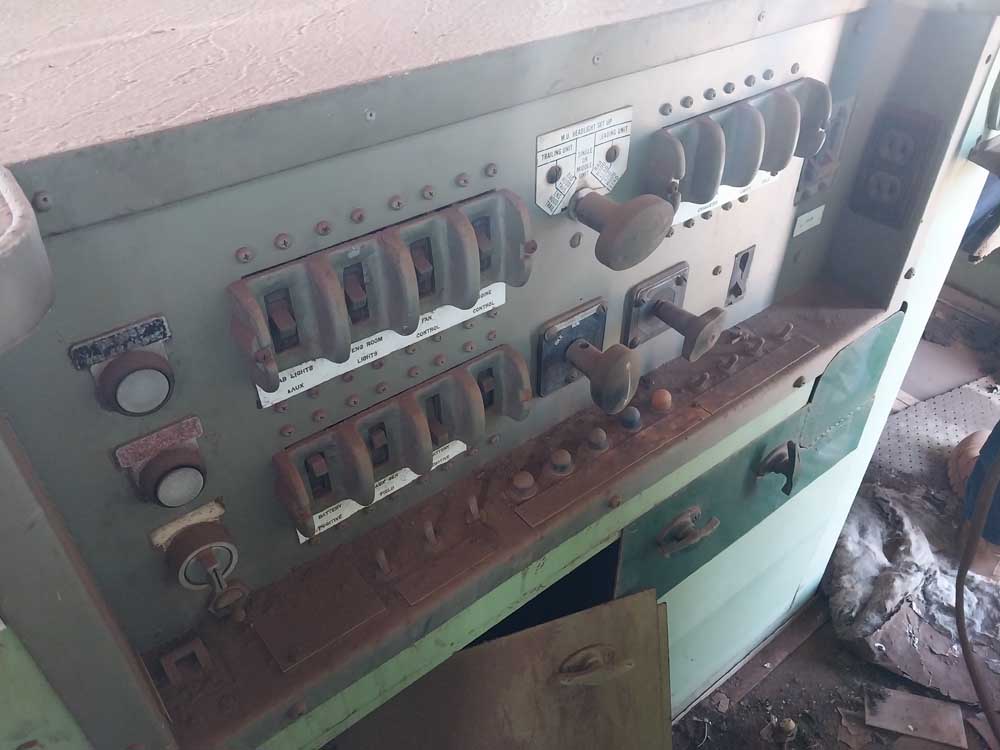 |
||||||||||||||||||
|
One of the control panels inside the locomotive. Phil Burrows photo. |
||||||||||||||||||
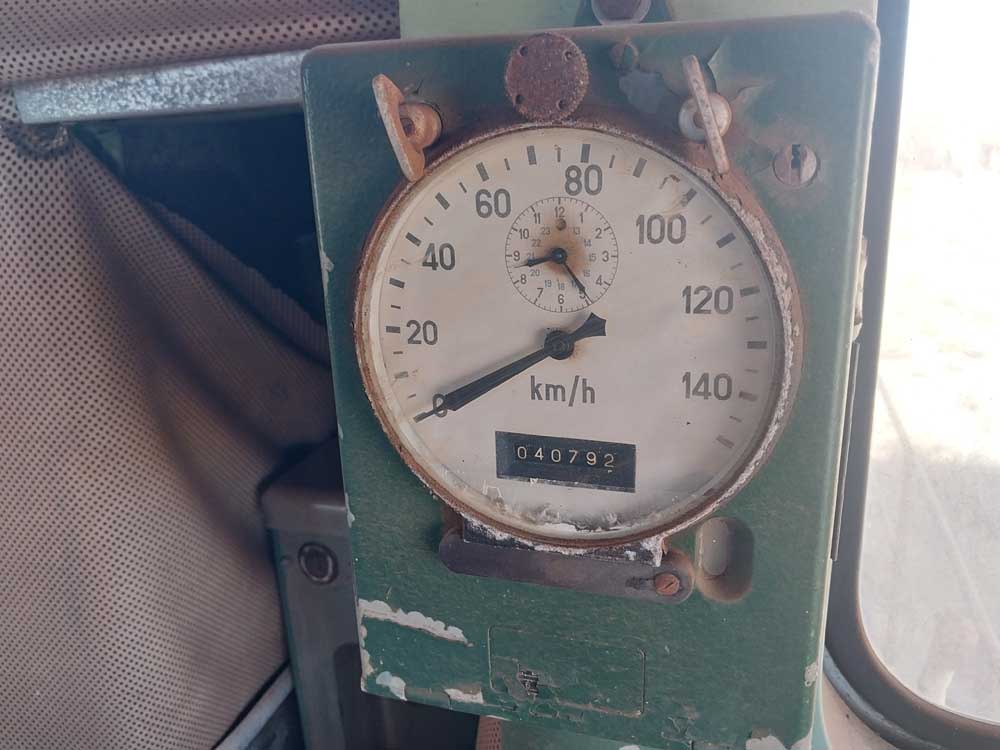 |
||||||||||||||||||
|
The speedometer. Phil Burrows photo. |
||||||||||||||||||
|
|
||||||||||||||||||
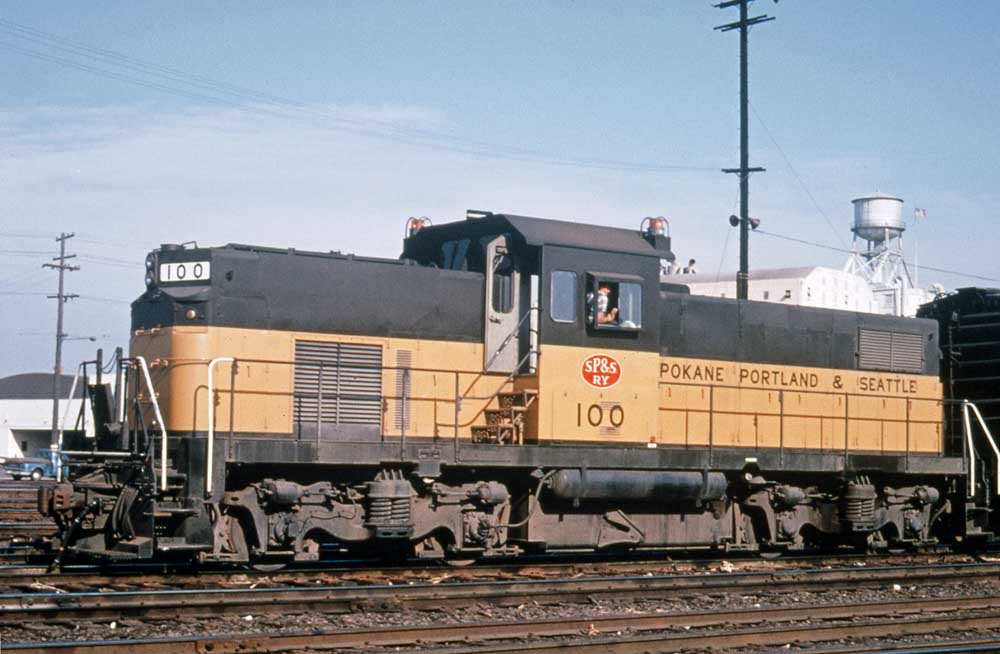
|
||||||||||||||||||
| Spokane, Portland & Seattle #100, seen here in Portland on 9 September 1969, shows off the medium height cab and high adhesion trucks. Jeff Moore collection. | ||||||||||||||||||
|
|
||||||||||||||||||
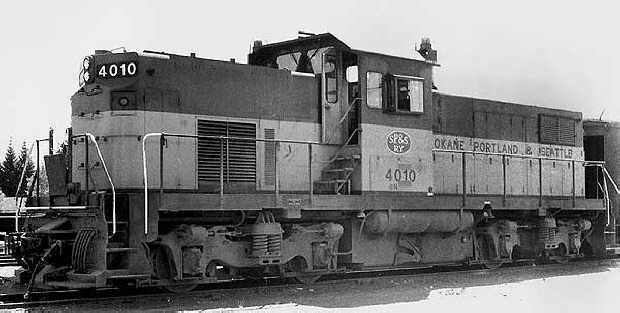
|
||||||||||||||||||
| E.O. Gibson caught this photo of the Burlington Northern #4010, formerly belonging to the SP&S, in Bend, Oregon. | ||||||||||||||||||
|
|
||||||||||||||||||
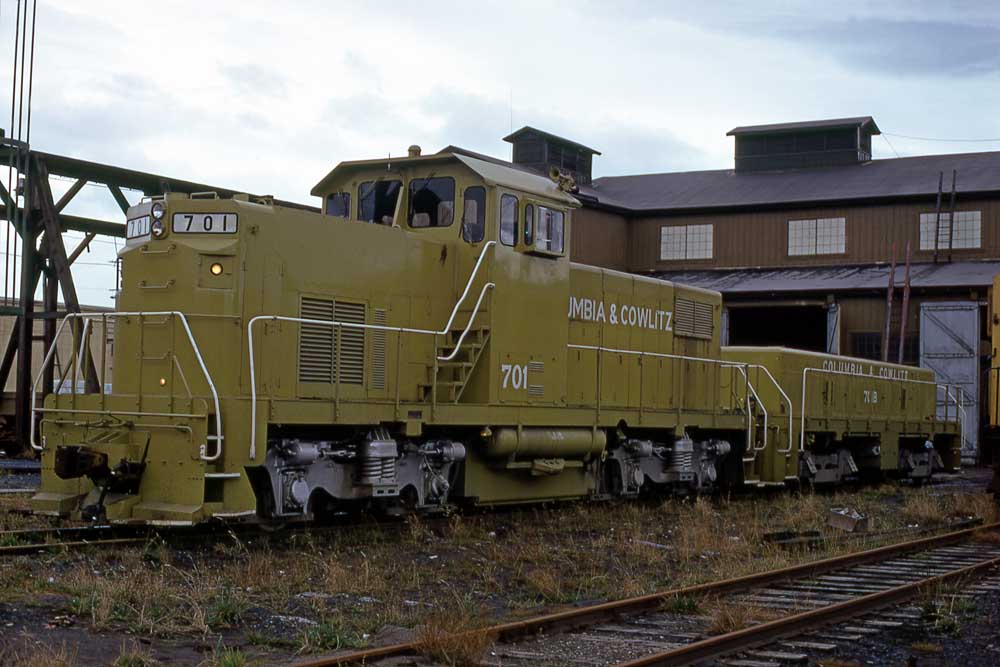
|
||||||||||||||||||
| Columbia & Cowlitz C-415 #701 at Longview, Washington, on 20 September 1973 shows the high cab height and high adhesion truck options. Joe Brockmeyer photo, Jeff Moore collection. | ||||||||||||||||||
|
|
||||||||||||||||||
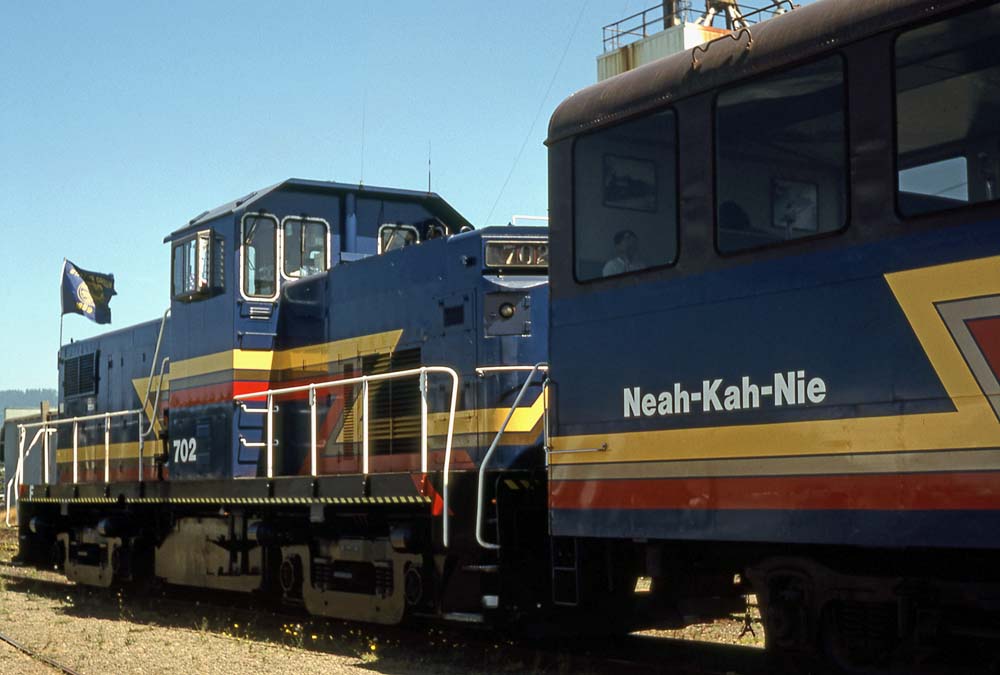 |
||||||||||||||||||
| Alco C-415 used by the Oregon Coastline Express on their tourist train out of Tillamook, OR on the Port of Tillamook Bay Railroad. This unit was built in 1968 for the Southern Pacific, and it passed through the hands of the Columbia & Cowlitz Railroad before arriving on the Oregon Coastline Express. After the OCE folded the unit went to the Spirit of Oregon Dinner Train, then to the Mount Hood Railroad, then to the Burlington Junction Railroad in Iowa where it is today. This unit features the standard AAR-type switcher truck and has the higher profile cab. Steve Moore photo. | ||||||||||||||||||
|
|
||||||||||||||||||
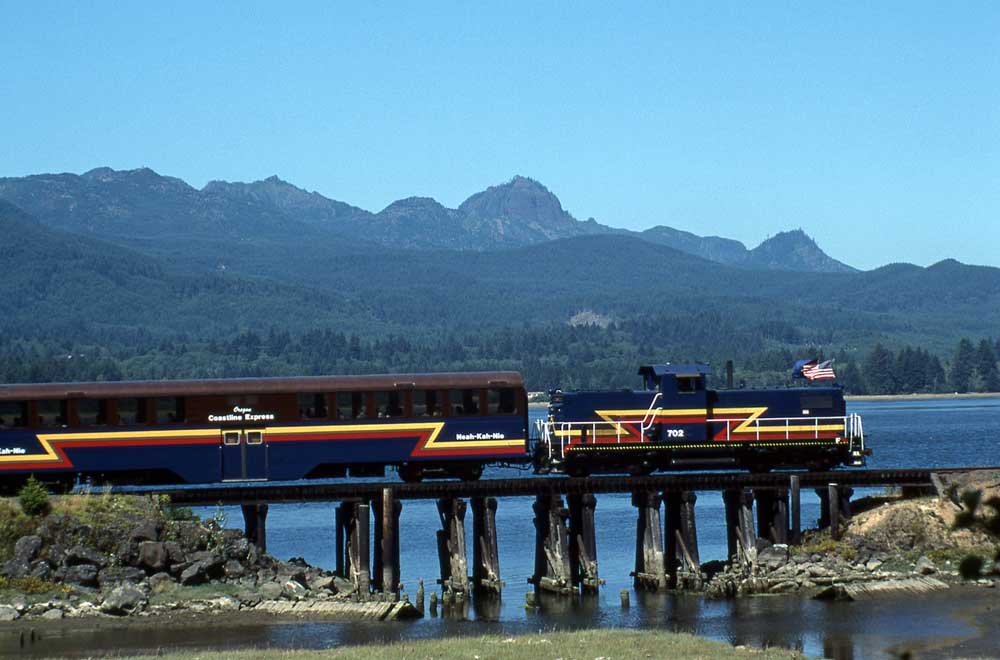 |
||||||||||||||||||
| Another view of the Oregon Coastline Express C-415 along the shores of Wheeler Bay north of Tillamook, Oregon. Steve Moore photo. | ||||||||||||||||||
|
|
||||||||||||||||||